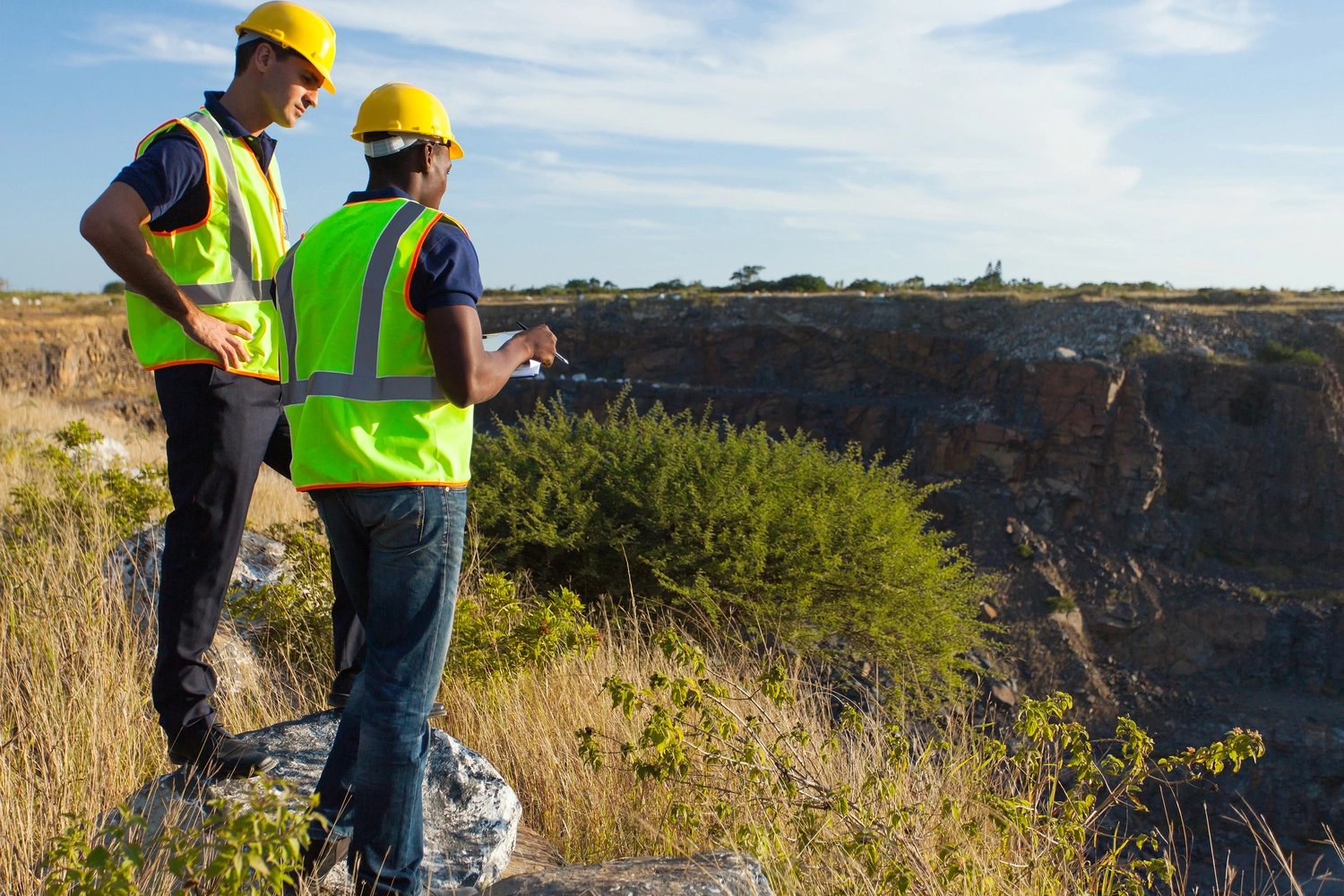Phase 1 Environmental Site Assessment (ESA)
Free Permitting Checklist
Practical Tips to Avoid Environmental Risk on all Your Projects
Download our environmental permitting checklist to get a step-by-step list of ways to protect your project from the 9 most common environmental risks.
Download Your Checklist
What is a Phase 1 ESA?
A Phase 1 Environmental Site Assessment, or Phase 1 ESA, is vital to the environmental due diligence process. These reports are required for commercial real estate transactions to inform the property buyer of past and present land use and risks. Any environmental risk on the site would be a liability to the new property owner and likely require extensive mitigation efforts. Phase 1 ESA reports inform a land developer if the discharge of hazardous substances, such as petroleum products, has occurred on the project site.
Phase 1 ESA reports follow standards set by the American Society for Testing and Materials (ASTM) and work to identify recognized environmental conditions (RECs) that might impact the value of a property or pose environmental risks. Phase 1 ESAs study whether or not current or previous property uses have impacted the soil or groundwater beneath the property, taking into account legal liabilities, the possibility of subsurface contamination, and health risks for the human population and the environment.
During the Phase i Environmental Site Assessment Process, a qualified and certified environmental professional must perform an in-depth review to help landowners with liability protections. These experts are trained to identify environmental issues, current conditions or evidence of a release that would cause environmental contamination on the site. They perform site visits where they physically inspect the subject property. These visual inspections are completed for brownfield or greenfield multifamily commercial property projects, industrial properties, and all developments alike.
The physical inspection is only one part of the entire assessment. The Environmental Professional will also review federal, state and/or local environmental agency records, aerial photographs, topographic maps, mining plans, fire insurance maps/plots and other notable records or city directories to analyze all past environmental concerns. The environmental procession will investigate local, state, and federal records regarding the history of property land use. This research includes discovering if a site contained aboveground or underground storage tanks or if the property housed hazardous materials.
Certain land uses lead to greater concern for contamination. These industries include manufacturing, auto repair shops, gas stations, and dry cleaners. To remain within ASTM standards, any evidence pointing to the possibility of a potential release of hazardous materials is considered an environmental condition, and further on-site testing must be conducted.
Phase i Vs. Phase ii Environmental Site Assessment
Suppose an environmental professional conducting a Phase 1 ESA deems the site clear of any environmental concerns that pose a risk. In that case, a Phase ii ESA is generally ruled as unnecessary and thus not recommended. However, if the evaluation points toward the presence of RECs, Controlled Recognized Environmental Conditions (CRECs) and/or Historical Recognized Environmental Conditions (HRECs), a Phase 2 ESA will most likely be mandatory.
In short: A Phase 2 ESA is a direct test for contamination based on environmental conditions found in Phase 1.
However, where direct sampling and testing isn't standard practice in Phase 1, it's the driving force behind Phase 2. In a Phase 2 ESA, an environmental professional conducts a subsurface investigation that generally includes soil, gas and groundwater testing and lab analysis. However, a direct testing can be requested during a Phase 1 ESA. For instance, land developers may request specific testing for asbestos-containing materials, molds, or the presence of lead-based paint on the site.
ESAs aren't always linear, and site assessments tend to have a 180-day shelf life. Regulations aren't evergreen, so check with your environmental consultant before proceeding with a dated report.
Why are Phase 1 ESAs Important
Phase 1 ESAs are a crucial part to the environmental due diligence process and vital in protecting landowners' liability in commercial real estate transactions and overall property value. ESAs provide a comprehensive report outlining current and historical uses of a site to identify environmental issues that threaten public safety or the environment. Issues that impact a property's environment that remains undetected can cause a whirlwind of (expensive) problems.

Who Regulates Phase 1 ESAs?
Environmental Protection Agency (EPA)
Federal guidelines and standards established by the Environmental Protection Agency (EPA) and ASTM standards regulate Phase 1 ESA reports
ASTM Standard
ASTM e1527
In addition to EPA regulation, the ASTM sets the standard for a Phase 1 ESA in compliance with the Comprehensive Environmental Response, Compensation and Liability Act's (CERCLA) Innocent Land Owner defense policies. The ASTM standards for Phase 1 ESA reports change regularly, and in December of 2021, E1527-21 established new strategies for approaching Phase 1 ESAs. Revisions are set in motion to regulate the ESA process further but based on higher-quality environmental due diligence and to stay on par with evolving environmental laws and agency standards.
Each time the ASTM revaluates the standard for a Phase 1 ESA, the EPA must review the changes and formally recognize them before moving forward.
ASTM E1527-21 Phase 1 ESA updates include the following:
-
The Phase 1 ESA interview process is subject to stricter guidelines regarding validating interviews from credible sources. Additionally, there are stricter requirements for the quantity and quality of photographs.
-
Historical documents need to extend back to at least 1940
-
Historical sources need also apply to adjacent or adjoining properties
-
Increasing the point of concern on more chemicals, including "C8 Chemicals" and PCBs, or Polychlorinated Biphenyls
-
A more in-depth look at HRECs and CRECs
-
A more explicit threshold for Phase 1 ESA shelf life
-
Data gaps must be listed at the beginning of all reports; no obsolete databases
ASTM fulfills the Brownfields All Appropriate Inquiries (AAI) amendment to CERCLA. This amendment required the evaluation of brownfield sites for environmental risk to protect property buyers and provide landowners with some liability protections. ATSM meets the same criteria created by the AAI amendment, therefore taking AII’s place as the regulatory standard.
Who Needs a Phase 1 ESA
When you buy a property, whether it is high risk or low risk (urban, rural or undeveloped), you are also taking on any environmental liabilities. With this in mind, it's essential to consider a Phase 1 ESA to ensure you aren't slammed with unidentified environmental problems that may harm your property value or cause damaging environmental consequences.
How Much Does a Phase 1 ESA Cost?
A Phase 1 ESA generally costs anywhere from $1,000 to $3,200 per report. However, if the environmental professional identifies any contamination on the site, a Phase 2 ESA can cost anywhere from $5,000 to over $25,000, depending on the scale of contamination. Still, ESAs are vital to protect landowners from legal troubles that can arise without conducting the proper environmental due diligence.
Additionally, keep in mind that low-cost reports may overlook ASTM standards, so you must ensure your project lands in the hands of a licensed Professional Engineer (PE) or Professional Geologist (PG).
How to Get a Phase 1 ESA: Environmental Due Diligence Process
Environmental Professionals
A Phase 1 ESA must be conducted by an environmental professional trained under ASTM standards and experienced with CERCLA requirements and regulations. These professionals have a state-issued license as a Professional Engineer, Professional Geologist, or other certification allowing them to perform these assessments. Environmental engineering consultants typically perform phase 1 ESA reports. Should any evidence of hazardous materials be found on the project site, property owners must make remediation efforts to ensure the safety of the land.
Transect
A Transect Report does not fulfill the same requirements as a Phase 1 ESA because though we don't focus on local contamination per CERCLA, our dynamic reports highlight potential environmental issues, regulatory requirements, transmission line data, and all “need-to-know” site information in minutes. Still, a Phase 1 ESA is crucial for proper environmental due diligence, but with Transect, you'll get a complete picture of your project's lingering environmental issues.
Free Permitting Checklist
Practical Tips to Avoid Environmental Risk on all Your Projects
Download our environmental permitting checklist to get a step-by-step list of ways to protect your project from the 9 most common environmental risks.
Free Permitting Checklist
Practical Tips to Avoid Environmental Risk on all Your Projects
Download our environmental permitting checklist to get a step-by-step list of ways to protect your project from the 9 most common environmental risks.
